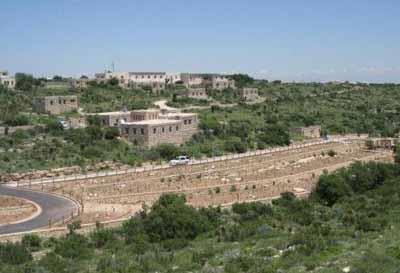To many visitors, the vast underground wonders at Carlsbad Caverns National Park and other caves may seem isolated from the effects of human activities on the surface. People have long used natural and manmade caverns as places of safety from all manner of threats and disasters, and valuable documents and objects are sometimes stored in secure underground facilities.
All that seemingly solid rock above the ceiling in a cavern isn't always as impenetrable as it may appear, however, and pollutants such as oil and antifreeze found in storm water runoff from parking lots can be very damaging to caves when those contaminants seep underground. A project at Carlsbad Caverns National Park is tackling those problems, and the effort is among the first in the world to be included in a pilot program for the SITES (Sustainable Sites Initiative).
SITES is an interdisciplinary partnership led by the American Society of Landscape Architects, the Lady Bird Johnson Wildflower Center at The University of Texas at Austin, and the United States Botanic Garden. Its goal is to "transform land development and management practices with the nation's first voluntary rating system for sustainable landscapes, with or without buildings."
The Bat Cave Draw and Visitor Center rehabilitation project at Carlsbad Caverns National Park was selected as one of the first landscape projects to participate in the pilot program to test the new rating system for sustainable landscape design, construction, and maintenance. The work at Carlsbad is among 150 projects located in 34 states and in Canada, Iceland and Spain.
Carlsbad's project is managed by the NPS' Denver Service Center, and includes removing existing parking areas that adversely impact the cavern and rehabilitating the area to its natural state using vegetation native to the region. The project will also collect and treat runoff in new parking areas to protect the cave, provide ways to monitor propagation efforts, preserve historic walls, and create educational opportunities.
"We are proud to have the projects at Carlsbad Caverns National Park included in this pilot program. While improving and updating existing facilities was one goal of these efforts, ensuring park resources are protected for in future generations is always a primary aim," said Superintendent John Benjamin.
The SITES pilot phase runs through June 2012. Feedback from this and other selected pilot projects will be used to revise the final rating system and reference guide by early 2013. You can learn more about the SITES initiative at this link on the program's website.




Comments
Good project. Maybe if we can "see" what's seeping underground into caves we will also realize these same pollutants seep into the ground everywhere.
At Oregon Caves NM, guest cabins sitting over the cave were removed long ago because of contaminants leaching into the cave.
Great project. Hopefully lessons learned can be applied to other parks to balance providing for experience and education with managing impacts.